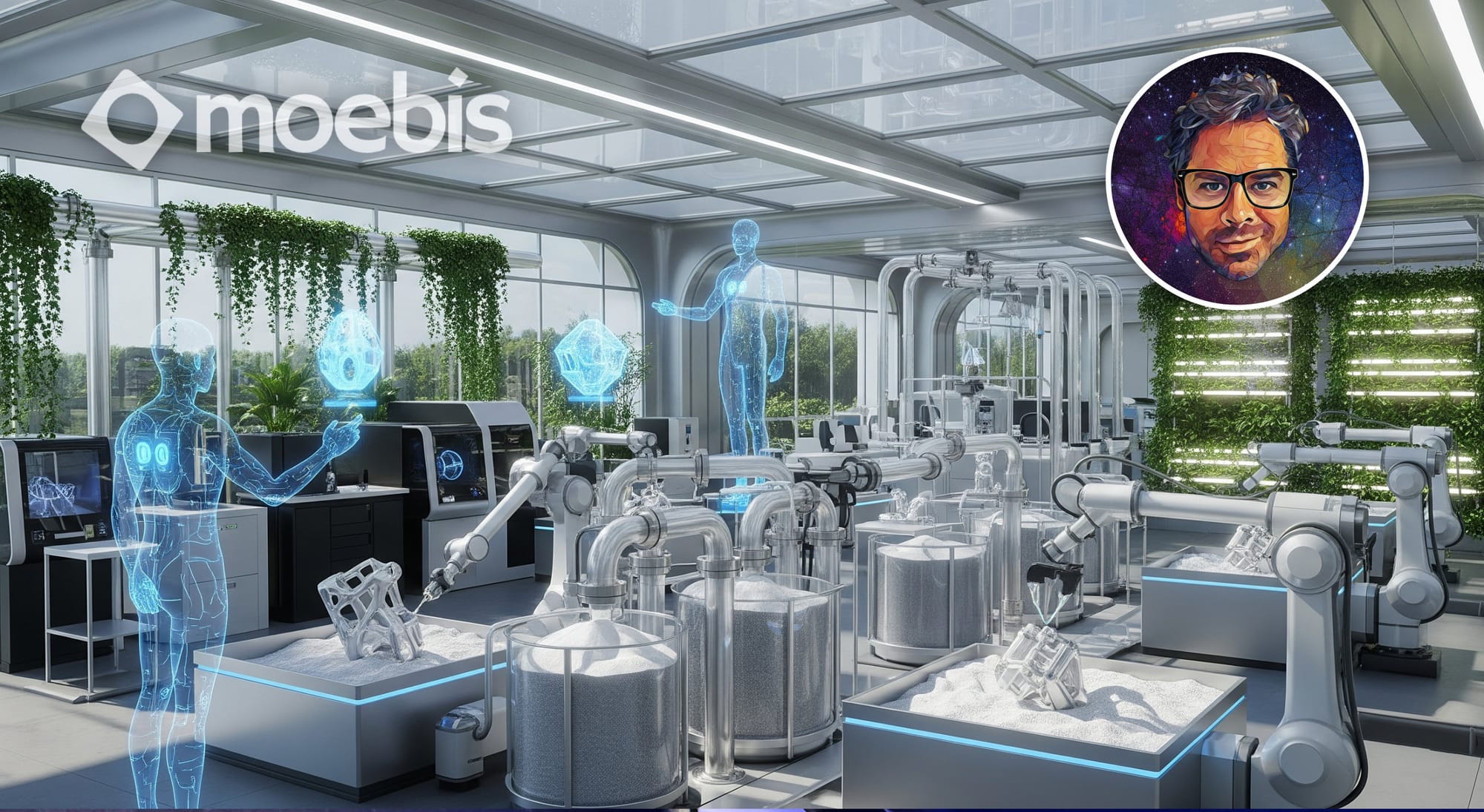AI + 3D Printing: The Blueprint for a Sustainable Manufacturing Revolution
For decades, manufacturing has walked a tightrope between productivity and planet-friendly practices. The old equation was simple: more output meant more waste, more emissions, and more energy burned. But that formula is about to be rewritten.

For decades, manufacturing has walked a tightrope between productivity and planet-friendly practices. The old equation was simple: more output meant more waste, more emissions, and more energy burned. But that formula is about to be rewritten.
Artificial intelligence and additive manufacturing (3D printing) are converging to create something extraordinary: a cleaner, faster, smarter way to make things. This isn’t just incremental improvement — it’s a transformation that could rewire the DNA of how products are designed, built, and delivered.
Imagine factories that design their own parts for maximum efficiency, fix mistakes before they happen, reuse nearly every gram of raw material, and keep their machines humming with almost zero downtime. That’s not science fiction. It’s what happens when AI takes the controls of 3D printing.

Let’s explore how this partnership is reshaping sustainable manufacturing from the ground up.
1. Design Without Waste: Letting AI Dream the Blueprint
Traditional design starts with an engineer and a blank screen. But AI-powered generative design flips the script — feeding the computer a set of goals and constraints, then letting it generate thousands of possible solutions in minutes.
The result? Components that are lighter, stronger, and astonishingly efficient with materials. Some designs slash raw material use by up to 50%, whether the build calls for aerospace-grade titanium or advanced polymers.
Since additive manufacturing builds only what’s needed, exactly where it’s needed, the mountains of metal shavings and offcuts from old-school manufacturing simply vanish. The environmental payoff is huge: lower carbon footprints, reduced mining and extraction, and cheaper, more efficient production.
2. The “Autopilot” Factory Floor
Design is just the start. Modern 3D printers now act like skilled operators with superhuman attention spans. Equipped with AI-driven vision systems, they watch every layer of a print in real time, ready to intervene if something’s off.
If a flaw starts to appear — maybe the laser is slightly misaligned, or the temperature shifts mid-print — the system makes instant adjustments. No wasted runs. No defective batches slipping through. Just smooth, consistent output that uses less energy and maximizes yield.
For manufacturers, that’s not just greener production — it’s a direct line to higher reliability and lower costs.
3. Closing the Loop: Circular Materials and Localized Production
In the old model, waste was inevitable. Today, AI and 3D printing are turning that waste into a resource. Powder-bed printers can reclaim up to 90% of unused material from a build. AI takes it further, blending reclaimed powder with fresh material in precise ratios to guarantee quality while minimizing waste.
And because 3D printing runs on digital design files, production doesn’t have to happen in a centralized, resource-hungry mega-factory. Instead, localized “print farms” can produce goods close to where they’ll be used — shrinking shipping emissions, reducing the need for large inventories, and lowering the global freight footprint.
4. Machines That Fix Themselves (Before They Break)
One of manufacturing’s biggest sustainability killers is downtime. When machines break unexpectedly, production stalls, parts get expedited, and energy use spikes.
AI-powered predictive maintenance is changing that. By “listening” to the vibrations of a printer and tracking its thermal signature, AI can detect tiny signs of trouble — a clog here, a laser misfire there — days before a failure.
The results are remarkable: up to 30% fewer breakdowns, extended machine life, and fewer last-minute, high-emission shipments.
💡 Numbers That Tell the Story
- 50% less material in AI-designed parts
- 90% of unused powder reclaimed and reused
- 30% fewer equipment breakdowns with AI predictive maintenance

Why This Matters
Put it all together, and AI-driven 3D printing isn’t just a clever way to make stuff — it’s a fundamental reimagining of manufacturing’s role in a sustainable future. We’re talking about an industry that designs out waste, builds only what’s needed, recycles its own materials, produces goods where they’re consumed, and keeps its machines running in peak condition with minimal intervention.
For both innovators and established players, the message is clear: the next manufacturing revolution won’t come from doing more of the same — it will come from doing things differently, with intelligence baked in at every stage.
The era of cleaner, smarter, more resilient manufacturing has already begun. The only question is: who will lead it?

